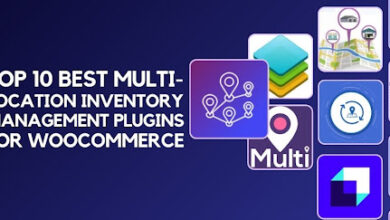Ensuring Cross-Platform Consistency: Strategies for Mobile and Web QA Testing

In today’s diverse digital ecosystem, maintaining cross-platform consistency is crucial for organizations seeking to deliver a seamless user experience. With applications being accessed on a myriad of devices and operating systems, inconsistencies between mobile and web platforms can lead to user frustration, decreased engagement, and, ultimately, a loss in revenue. Reliable software performance across different platforms is a matter of user satisfaction and a competitive differentiator. In this environment, ensuring that applications perform uniformly, regardless of the device or platform, is vital for sustaining brand credibility and trust.
Overview of Mobile and Web QA Testing Practices
Quality assurance (QA) testing plays a pivotal role in achieving this uniformity. Mobile and web QA testing practices involve systematically examining applications to detect issues that could affect performance, security, and usability. These practices include functional testing, usability testing, performance testing, and security testing across various devices and browsers. Through rigorous testing, organizations can identify discrepancies and ensure that all aspects of their digital products are refined to deliver a consistent experience. Implementing a robust QA testing solution service is essential to streamline these processes and maintain high standards of quality.
Challenges in Cross-Platform Testing
Common Issues in Mobile and Web Environments
Cross-platform testing presents unique challenges due to the variety of operating systems, screen sizes, and hardware capabilities. Mobile applications must contend with different versions of Android and iOS, while web applications need to function reliably across various browsers such as Chrome, Firefox, Safari, and Edge. Issues such as layout discrepancies, performance bottlenecks, and inconsistent functionality often arise when software is deployed across multiple platforms. These challenges necessitate comprehensive testing strategies that can adapt to the dynamic nature of digital environments.
The Impact of Inconsistencies on User Experience and Business Outcomes
When applications fail to provide a consistent experience across platforms, the impact on user experience can be significant. Inconsistent performance may lead to user frustration, increased support requests, and a negative perception of the brand. Furthermore, such inconsistencies can result in lost sales, reduced customer loyalty, and diminished market share. For businesses, the stakes are high; operational inefficiencies and customer dissatisfaction translate directly into reduced revenue. Therefore, addressing these issues through effective QA testing is imperative to ensure that cross-platform applications meet the highest performance and reliability standards.
QA Testing Solution Service: Enhancing Cross-Platform Consistency
Introduction to QA Testing Solution Service
A dedicated QA testing solution service is designed to address the complex requirements of cross-platform testing. Such a service offers a comprehensive approach to quality assurance by integrating multiple testing methodologies into one streamlined process. Organizations employing a QA testing solution service can achieve thorough testing across mobile and web platforms, ensuring that applications function consistently and reliably. This integrated approach minimizes the risk of defects and enhances the digital product’s overall quality, fostering greater user satisfaction and trust.
Key Features and Capabilities for Cross-Platform Testing
A robust QA testing solution service comes equipped with several key features that enable effective cross-platform testing. These include:
- Automated Test Execution: Automation tools are essential for running repetitive tests across different platforms. They ensure that every aspect of the application is verified quickly and accurately.
- Real-Time Reporting and Analytics: Advanced reporting features provide continuous feedback on performance metrics, allowing QA teams to identify and address issues in real time.
- Device and Browser Simulation: The service supports the simulation of multiple devices and browsers, ensuring that the application behaves consistently across diverse environments.
- Integration with Continuous Integration/Continuous Deployment (CI/CD): Seamless integration into CI/CD pipelines facilitates continuous testing, allowing for rapid iteration and quick identification of potential defects.
- Comprehensive Test Coverage: The solution covers various testing types, including functional, performance, security, and usability tests, ensuring that all aspects of the application are evaluated.
Benefits of Implementing a Comprehensive QA Testing Solution Service
The benefits of a comprehensive QA testing solution service are multifaceted. Organizations experience reduced development cycles as automated testing and continuous integration speed up the process of identifying and resolving issues. Enhanced test coverage leads to fewer bugs in production, which translates into improved user experiences and lower support costs. Additionally, consistent performance across platforms reinforces brand reliability and fosters customer loyalty. Ultimately, the implementation of such a service enables organizations to optimize IT resources, reduce operational risks, and achieve a competitive advantage in the digital marketplace.
Best Practices for Mobile and Web QA Testing
Strategic Planning and Test Case Development
Effective QA testing begins with meticulous strategic planning. Organizations should develop a detailed testing strategy that outlines objectives, identifies key performance indicators, and maps out comprehensive test cases for both mobile and web applications. A robust test plan ensures that every functional and non-functional aspect of the application is evaluated, covering various user scenarios and edge cases. This proactive approach helps in detecting issues early, thereby reducing the risk of defects reaching the production environment.
Leveraging Automation and Continuous Integration
Leveraging automation is essential for efficient cross-platform QA testing. Automation tools significantly reduce the time and effort required to execute test cases across multiple platforms. Continuous integration practices ensure that tests are run automatically with every code change, providing immediate feedback on the impact of new developments. This proactive monitoring facilitates early detection of issues and allows for rapid resolution, contributing to a more stable and reliable application.
Regression Testing and Performance Monitoring Across Platforms
Regular regression testing is critical to ensure that new updates do not negatively impact existing functionality. Performance monitoring tools must be deployed to track the application’s behavior under various loads and conditions. Organizations can continuously evaluate performance across different platforms to identify potential bottlenecks and optimize system performance. A comprehensive QA testing solution service provides these capabilities, ensuring that both mobile and web applications maintain consistent performance, even as updates and new features are introduced.
Case Studies and Real-world Applications
Success Stories Demonstrating Cross-Platform Consistency
Numerous organizations have achieved remarkable results by implementing a dedicated QA testing solution service. Case studies highlight how companies in the e-commerce, finance, and healthcare sectors have successfully maintained cross-platform consistency, leading to enhanced user experiences and higher customer retention rates. These success stories demonstrate that a well-executed QA strategy can significantly improve application performance, reduce downtime, and drive overall business growth.
Measurable Improvements in User Experience and Operational Efficiency
Real-world applications of a QA testing solution service show measurable improvements in both user experience and operational efficiency. Metrics such as reduced bug counts, faster release cycles, and improved system stability serve as evidence of the effectiveness of comprehensive QA testing. Organizations that invest in such solutions report lower maintenance costs, fewer customer complaints, and a stronger reputation in the market.
Future Trends in Cross-Platform QA Testing
Emerging Technologies and Tools
The landscape of QA testing is evolving rapidly with the advent of emerging technologies. Innovations in artificial intelligence, machine learning, and advanced analytics are poised further to enhance the accuracy and efficiency of cross-platform testing. These technologies will enable more intelligent test automation, predictive maintenance, and real-time performance monitoring, ensuring that applications remain robust across all platforms. As these tools become more sophisticated, the QA testing solution service will continue to adapt, providing even greater value to organizations.
The Evolving Role of QA Testing Solution Service in a Multi-Platform World
As digital platforms continue to diversify, the role of a comprehensive QA testing solution service becomes increasingly vital. In a multi-platform world, the ability to ensure consistency and reliability across mobile, web, and emerging platforms such as wearable devices is essential. Organizations will increasingly rely on advanced QA services to maintain a unified user experience and to drive continuous improvements in software performance. The future will see a deeper integration of QA testing within the development lifecycle, reinforcing its importance in strategic planning and operational efficiency.
Strategic Insights and Future Outlook
The journey toward ensuring cross-platform consistency through comprehensive QA testing is critical for modern digital enterprises. Advanced QA testing solution services provide the framework necessary to detect, analyze, and rectify defects across mobile and web platforms, thereby enhancing overall software reliability. By leveraging strategic planning, automation, and continuous integration, organizations can optimize their testing processes and achieve significant improvements in both user experience and operational efficiency.
Real-world case studies have demonstrated that a dedicated QA testing solution service leads to measurable benefits, including reduced downtime, lower maintenance costs, and improved customer satisfaction. As emerging technologies continue to evolve, the role of advanced QA testing will become even more central to maintaining a competitive advantage.
For further insights on integrating these transformative strategies into existing IT environments and tailoring solutions to meet specific business needs, interested parties are encouraged to contact sales@zchwantech.com. Embracing a robust QA testing solution service today lays the foundation for a future characterized by seamless, high-quality digital experiences across all platforms.



